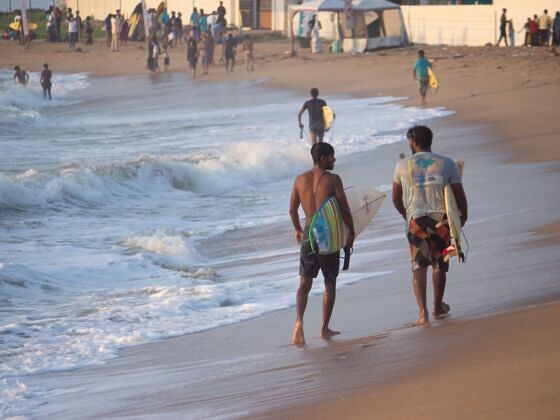SURFERS ARRIVE THROUGHOUT THE YEAR to ride its waves. The best surf sports are along Chennai’s East Coast Road (ECR). Some surf spots along the ECR are surrounded by ancient and historic Hindu temples too.
Although India has a long coastline spanning the Arabian Sea to the Bay of Bengal, local surf culture here is relatively new. Besides a handful of surfers who passed through on wave scouting missions, it wasn’t until American Jack Hebner — now fondly known as “surf swami” — set up a surf school in 2004 that there was much of an organized scene.
